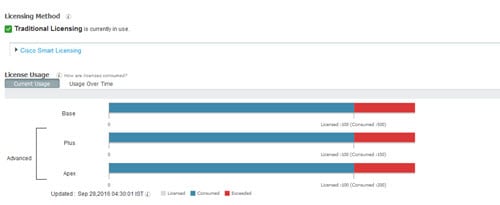

- #Cisco ise 2.4 mobility license how to
- #Cisco ise 2.4 mobility license upgrade
- #Cisco ise 2.4 mobility license software
- #Cisco ise 2.4 mobility license license
Follow the process to create a Smart Account.ĥ. From the Important News popup window, click “Get a Smart Account.”Īnother option is to click “Request a Smart Account” in the Administration area on this page.Ĥ.
#Cisco ise 2.4 mobility license software
If you do not have a Smart Account, you will need to create one by navigating to the Cisco Software Central webpage at. If you have a Smart Account, log in to that account and go to step 5.Ģ.
#Cisco ise 2.4 mobility license license
Note that VM Small, Medium, and Large licenses do not cover what VM Common license cover, so the ISE 3.1 with the legacy VM license will be out of compliance.Ĭustomers should take the following steps to migrate from their legacy VM Small, Medium, and Large licenses to VM Common licenses:ġ.
#Cisco ise 2.4 mobility license upgrade
As such, for the seamless customer experience, customers should migrate to the VM Common license before they upgrade the ISE image to the 3.1 release. The VM Common license is at the top of the license hierarchy, and it covers what VM Small, Medium, and Large licenses cover.

Migrating to the new licensing scheme requires simple steps.
#Cisco ise 2.4 mobility license how to
How to migrate from the legacy VM Small, Medium, and Large licenses to VM Common licenses If you’re using the old VM license (i.e., R-ISE-5VM-K9=), you should migrate the old VM license to the legacy VM Medium license (“R-ISE-VMM-K9=”) and then migrate the legacy VM Medium license to the VM Common license. How are licenses converted from legacy VM licenses to the VM Common license?Įach legacy VM license will be converted to a 1 VM Common license. You can test ISE 3.1 prior to upgrading your entire network, ensure ISE VM Common License is working as planned, and then upgrade your production deployment. Like all ISE deployments, ISE 3.1 can be deployed in a lab setting with the included 90-day evaluation license on your Smart Licensing portal. This change removes the need for Product Activation Keys (PAKs) and uses the Cisco Smart Software Manager (CSSM) to obtain the necessary authorization. Cisco Smart Licensing helps you procure, deploy, and manage licenses easily, allowing devices to self-register and report license consumption.

Starting with the Cisco ISE 3.0 release, you are required to have Smart Licensing, which further requires you to have a Cisco License Smart Account created and configured before you upgrade ISE or migrate your existing “classic” ISE licenses. The ordering guide denotes which use cases and capabilities require which licenses. Further information can be found in the Cisco ISE Ordering Guide. Licensing in Cisco ISE is supplied as feature-based packages, with different features supported in each of the Essentials, Advantage, and Premier licenses. This document will guide you through the process of determining what is required to upgrade from Cisco ISE “classic” licenses (Base, Plus, and Apex) to the new ISE license scheme with Cisco ISE Essentials, Advantage, and Premier.Ĭisco ISE licensing provides the ability to manage access and the application features, such as the number of concurrent endpoints that can use Cisco ISE network resources. With the release of Cisco ® Identity Services Engine (ISE) 3.0 in September 2020, Cisco announced a new streamlined licensing scheme for Cisco ISE in line with the Cisco DNA Center ™ licensing tiers, which reduces the complexity in ordering.


 0 kommentar(er)
0 kommentar(er)
